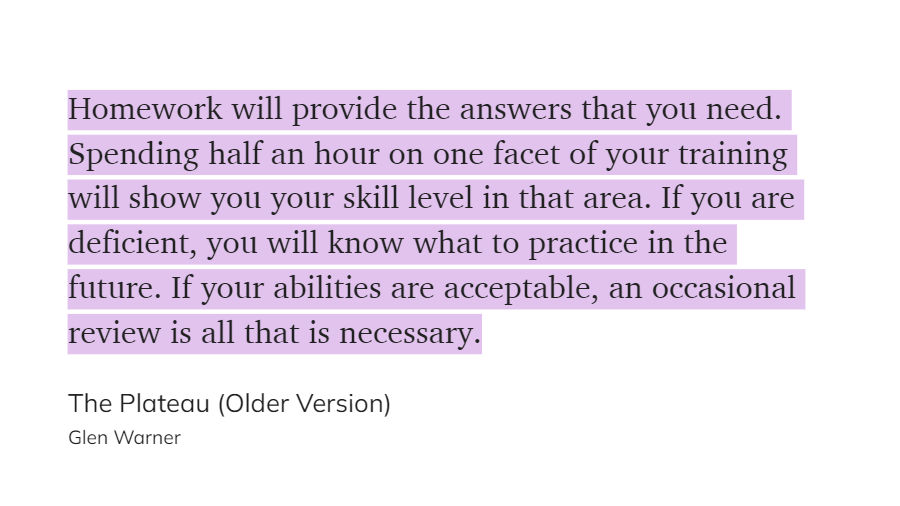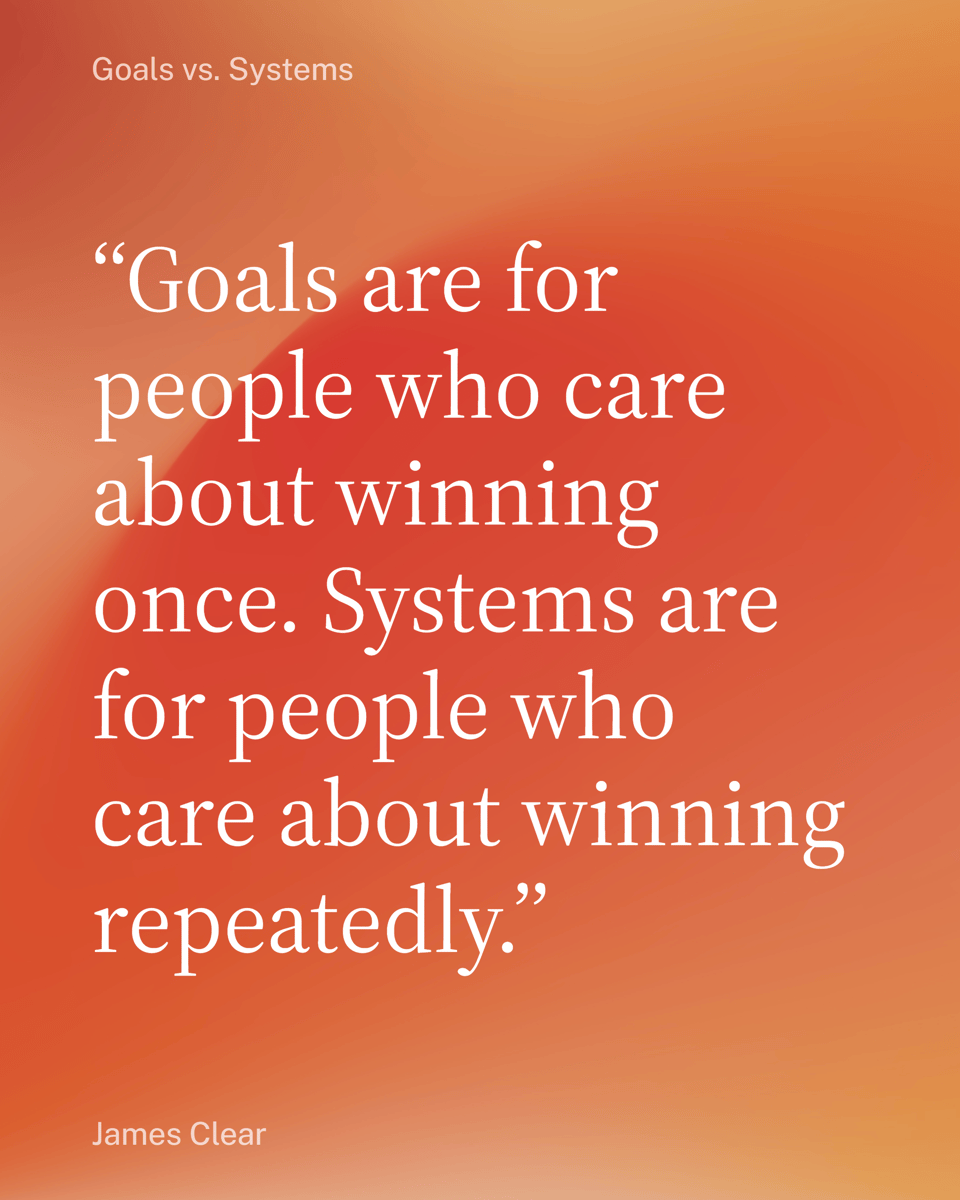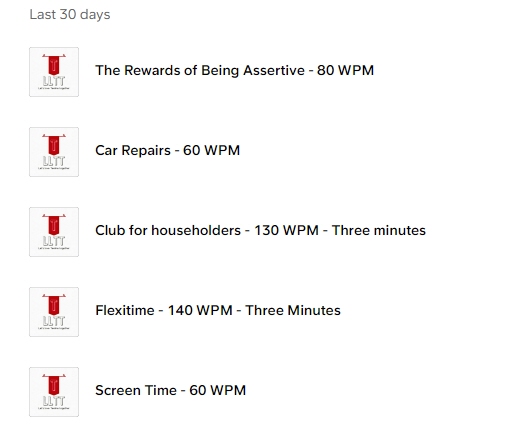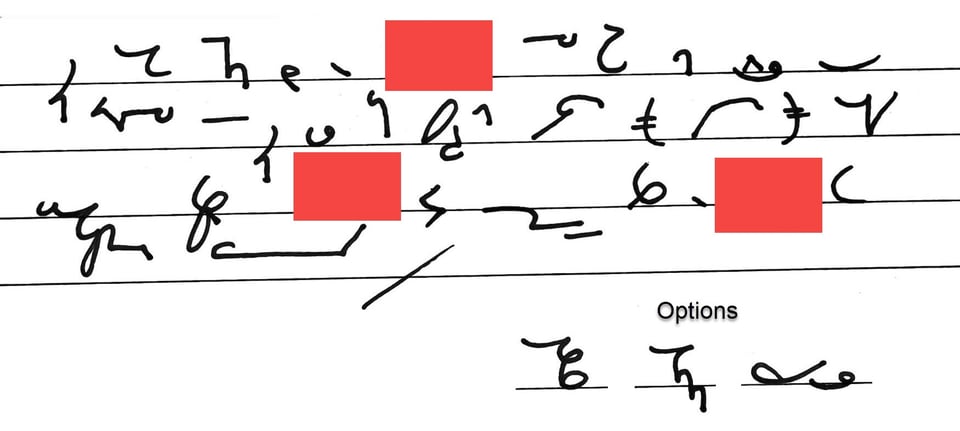LLTT Newsletter #5 - August 2023

LLTT - Issue #5 - August 2023
Welcome back.
In this issue, we discuss the best places to find homework, why ignoring goals can be good if you want better results (and what to focus on instead) and finally, we offer some thoughts on why learning requires action. Let's get to it!
Homework
If you are looking for a reliable source of homework assignments to enhance your shorthand skills, look no further than returning to your Teeline theory.

Here's why a program of revisiting your theory stands out and why it is one of the best places to find shorthand homework you can "assign" to yourself:
Methodical Progression: Shorthand theory is usually organised to ensure a smooth and methodical progression in learning shorthand. Starting with the basics and gradually building up to more advanced techniques, it is designed to reinforce your knowledge and improve your speed.
Practice Makes Perfect: Practice is the key to mastering shorthand. From dictation exercises to transcriptions and various drills, you can find ample opportunities to put your shorthand skills to the test.
Self-Paced Learning: Learning shorthand at your own pace can be challenging, but also rewarding and effective. Theory revision allows you to take control of that journey. Whether you're a busy professional or a dedicated student, you can set your own schedule and tackle the assignments when it's most convenient for you.
Comprehensive Coverage: The theory portion of shorthand usually covers a wide array of techniques and applications, helping to ensure you are equipped with a holistic understanding.
If you have not done so yet, or recently, consider going back through our Teeline Shorthand Beginners Series. Additionally, check out our Theory and Principles Playlist on YouTube for homework. Finally, you can refer to our Teeline Resources page for a comprehensive list of published books.
Ignoring Goals

Achieving success and personal growth requires more than just setting goals. It demands a systematic and well-structured approach that propels you forward, ensuring steady progress and sustainable results. Let's look at some advantages of adopting a more "system-driven" approach over merely setting a goal.
Consistency Breeds Success
When you rely solely on goal-setting without having a system behind it, you often face the temptation to procrastinate or lose focus. In contrast, a well-designed system incorporates a framework that holds you accountable to building the habits that will help you achieve the results you want. By establishing a clear and repeatable process, you build momentum, making it easier to maintain progress over the long term. Consistency breeds success by helping you stay on track even when motivation wanes.
Process-Oriented Mindset
Goals are essential, but focusing solely on the end result can lead to tunnel vision, overlooking vital learning opportunities along the way. A system-driven approach shifts the focus to the process itself, emphasising continuous improvement and learning. The journey becomes as important as the destination, and you become more resilient and adaptable, embracing challenges as stepping stones towards growth.
Overcoming Obstacles
In the absence of a system, challenges can easily derail you from your goals. However, a system equips you with tools to tackle obstacles head-on. It holds you accountable to the plan. When hurdles arise, you are better able to adapt, learning from each experience and fine-tuning your approach to achieve even better results.
Building Sustainable Habits
Sustainable success requires establishing positive habits that support your goals. Systems inherently revolve around habit formation, making it easier to integrate new behaviours into daily life. By developing healthy routines that align with your objectives, you ultimately reinforce the foundation for long-term success.
Motivation through Small Wins
A system-driven approach encourages you to break down your larger goals into smaller, achievable milestones. Celebrating these incremental victories fuels motivation and enhances your sense of accomplishment.
So how might we build a "system" for learning rather than just setting a goal? While the following is but a suggestion, it should give you an idea of how spending some time on your learning structure will give you a solid framework from which to further secure your learning efforts. Add or subtract as you situation demands.
Phase 1 - Learning the Basics
- Study Teeline theory in-depth to learn the basic rules and principles. Focus 100% on accuracy.
- Break down new words and practice slowly at first, maintaining technique. Only increase speed once mastered.
- Practise 30-60 minutes daily. Four fifteen minute sessions can be more beneficial than one continuous hour.
- Build a list of "hesitation" words or groupings that give you pause. Drill them frequently, rotating in new words as necessary.
- Read through all your notes and underline any unclear outlines. Recognize that in order to improve, you must identify any patterns of weakness.
Phase 2 - Build Speed and Fluency
- As you work on speed, maintain clarity as a top priority. Resist the urge to sacrifice legibility for untranslatable speed.
- Commit to working a portion of your day at just "beyond" your current speed. If it feels comfortable, it's probably not fast enough.

- Continue to do targeted repetition drills on outlines, words, or sentence patterns you struggle with to reinforce muscle memory.
- Learn how to write rhythmically without hesitation by improving concentration and transition between outlines.
- Work on short 1-2 minute high-speed burst drills to improve your endurance and your ability to handle time constraint pressures.
Phase 3 - Optimise for Exam Performance
- Learn how the testing process works. Adopt a "test mode" mentality, focusing on maximising scoring potential rather than worrying about perfect writing.
- Practice allowing some acceptable reduction in quality while maintaining reasonable clarity. Always remember it's meaningless if you can't read it back.
- Read and review everything you write and identify what might have been done differently to reduce errors.
- Practice staying focused and not psyching yourself out when challenged with difficult sections during a test.
Phase 4 - Continue Growing
- Maintain an evolving list of the most common words, phrases and any specialised words you may come across in your field.
- Don't forget your theory. Assign yourself homework. Return to the basics often.
- Remember that it is not always about speed. Regularly return to the slower "perfect practice" drills to reinforce ideal technique, especially if you hit speed plateaus.
- Build experience through a wide array of dictation practice and repetition to refine skills and speed. Find "easier" high-speed drills and "harder" slower-speed drills. They will both teach you something.
- Seek out coaching and tips from teachers, mentors, books, the LLTT website, etc. to keep improving. Remember you can always contact us for help or additional ideas.
Why learning requires action

In the quest for knowledge, there's a simple yet profound truth that often goes unnoticed: "It is the one who does the work that does the learning."
Understanding the Quote
These words echo the principle that genuine learning comes from active involvement. It underscores the idea that learning isn't a passive absorption of information but a dynamic journey that requires effort, participation, and action.
The Power of Hands-On Learning
Imagine reading a book about riding a bicycle versus actually getting on one and pedalling. The distinction is clear – the latter involves real experience and engagement. Active participation leads to the acquisition of practical skills. Through hands-on learning, individuals don't just memorise theories; they internalise knowledge and apply it to real-world scenarios.
Why Action Enhances Learning
Application Reinforces Understanding: When you put theory into practice, you solidify your understanding. Trying things out helps you see how concepts work in the real world.
Problem Solving and Critical Thinking: Action-driven learning prompts you to think on your feet. When faced with challenges, you must analyse, adapt, and find solutions.
Learning from Mistakes: Taking action involves the risk of making mistakes. However, these mistakes are invaluable learning opportunities that guide you toward improvement. It's not really a mistake as long as you learn from it.
Retention and Recall: Finally, active engagement increases your ability to remember and recall information. Doing something creates a memorable experience that anchors the knowledge.
Remember: Growth does not come from a comfort zone. You only stretch yourself when you actively take part in the learning process. Overcoming challenges fosters resilience and builds confidence. Staying within your comfort zone might feel safe, but it hinders progress. So step into unfamiliar territory, invite active change into your life and watch what can happen.
Interesting Links
A curated collection of interesting links that may ignite your curiosity or broaden your horizons.
Big Ben Word Game - A unique puzzle for each second of the day

BIG BEN 🔔 word game
A unique puzzle for each second of the day, with a satisfying BONNGGG sound that shakes the game when you find a long word.
Language, Please — a free, living resource for journalists and storytellers seeking to thoughtfully cover evolving social, cultural, and related topics.

Language, Please: Style Guide & Resources for journalists and storytellers
Language, Please, is a free, living resource available to all journalists and storytellers seeking to thoughtfully cover evolving social, cultural, and identity-related topics.
The Best Notebooks and Notepads - After interviewing experts, researching more than 80 notebooks, and writing zealously in 24 of them side by side over several weeks, here are the picks in a number of sizes and styles.

The 12 Best Notebooks and Notepads for 2023 | Reviews by Wirecutter
No one notebook is perfect for everyone, so we found 12 in different styles and sizes—all better than what you could grab off the shelf at the pharmacy.
Recent website updates
Outline of the Day: Discover a daily dose of Teeline shorthand. This is an ongoing series where we unveil a new card every day, featuring a single Teeline outline, grouping, and/or a concise phrase. Elevate your revision sessions through our #OutlineOfTheDay series on Instagram.
Outline of the Day
Discover daily doses of Teeline shorthand! We post a new card every day, featuring single Teeline outlines, groupings, and/or a concise phrase. Elevate your revision sessions through our #OOTD (Outline of the Day) hashtag series.
Recent YouTube updates
We added a new YouTube playlist this past month focused on reading Teeline. These fun exercises will give you the opportunity to increase your sight-reading abilities and your transcription speed.
Expanded Quizlet sets
Over the last month, we've created several new sets of flashcards that will come in handy for your revision efforts. Check out a couple of our latest:
Meteorologist gives advice about protecting ourselves from the heat
Award for woman who started club for Alzheimer patients and their carers
Soundcloud
As of this month, there are more than 343 audio dictation files available for your revision work on Soundcloud. Interested in seeing what our Top Five Tracks over the past 30 days were? Here you go!

A Cloze deletion exercise
A cloze deletion (also called a "Cloze Test") is a learning and assessment technique where a passage of text is presented with certain words or phrases removed, leaving blank spaces. Learners are then required to fill in the blanks with the appropriate missing words based on their understanding of the context. This exercise helps reinforce comprehension, vocabulary, and grammar skills by prompting learners to recall and apply their knowledge to complete the gaps in the text. See if you can correctly place the three options below in their respective places.

Reading Practice
We're going to wrap up this newsletter with some Teeline reading practice. See how quickly you can read the following.

But before you start:
Grab your stopwatch (or use the one on your phone).
You'll want to record how much time it takes for you to read through it cold the first time.
Then do it again and see if you can beat the previous time.
And finally, repeat for a third time.
You should find each successive pass shaves seconds off the clock and by the third pass, you'll have substantially improved. This is not mere child's play. Reading printed Teeline is critical to developing greater facility with shorthand. Each time you go through this type of exercise, you are firmly imprinting the outlines into your mind. In this manner, reading Teeline will help you to ultimately write better Teeline.
Stay tuned and subscribe for the next issue where we share:
How learning a challenging skill like shorthand is about more than learning the skill itself.
A feature interview with a fan of Let's Love Teeline Together who tells us how LLTT helped him pass his 100 wpm exam!
An often overlooked (yet highly-effective) strategy to assist Teeliners in cementing their grasp of newly-learned vocabulary.
Thanks for reading!
Visit us at the LLTT Website, YouTube, Twitter, Facebook, Instagram, Quizlet and Soundcloud.
If you have suggestions or topics you'd like to see covered in future newsletters, please contact us: https://www.letsloveteelinetogether.com/contact-us.
If you find this newsletter helpful, please forward to a Teeline friend and suggest they sign up!
A Parting Thought

"Don't Get Worried. Don't Get Stressed. Let's Love Teeline Together."

Add a comment: